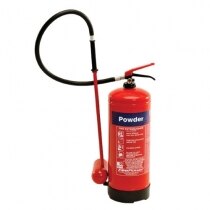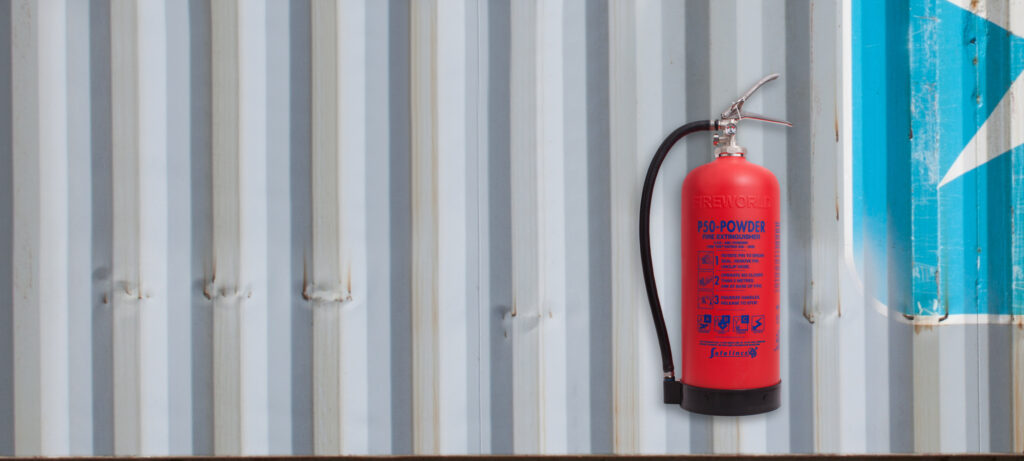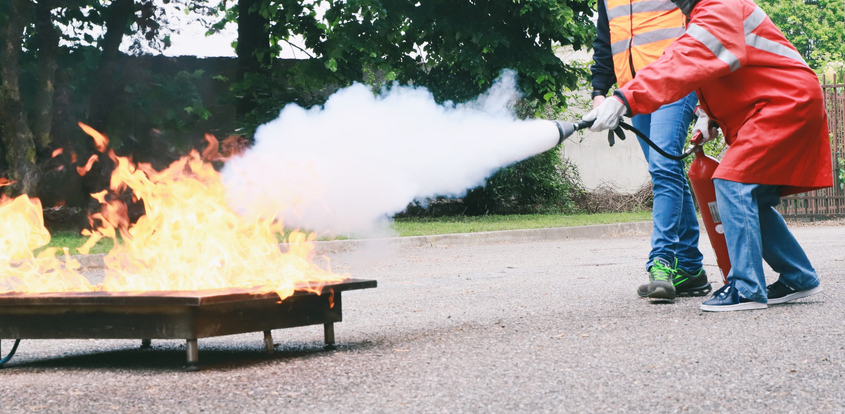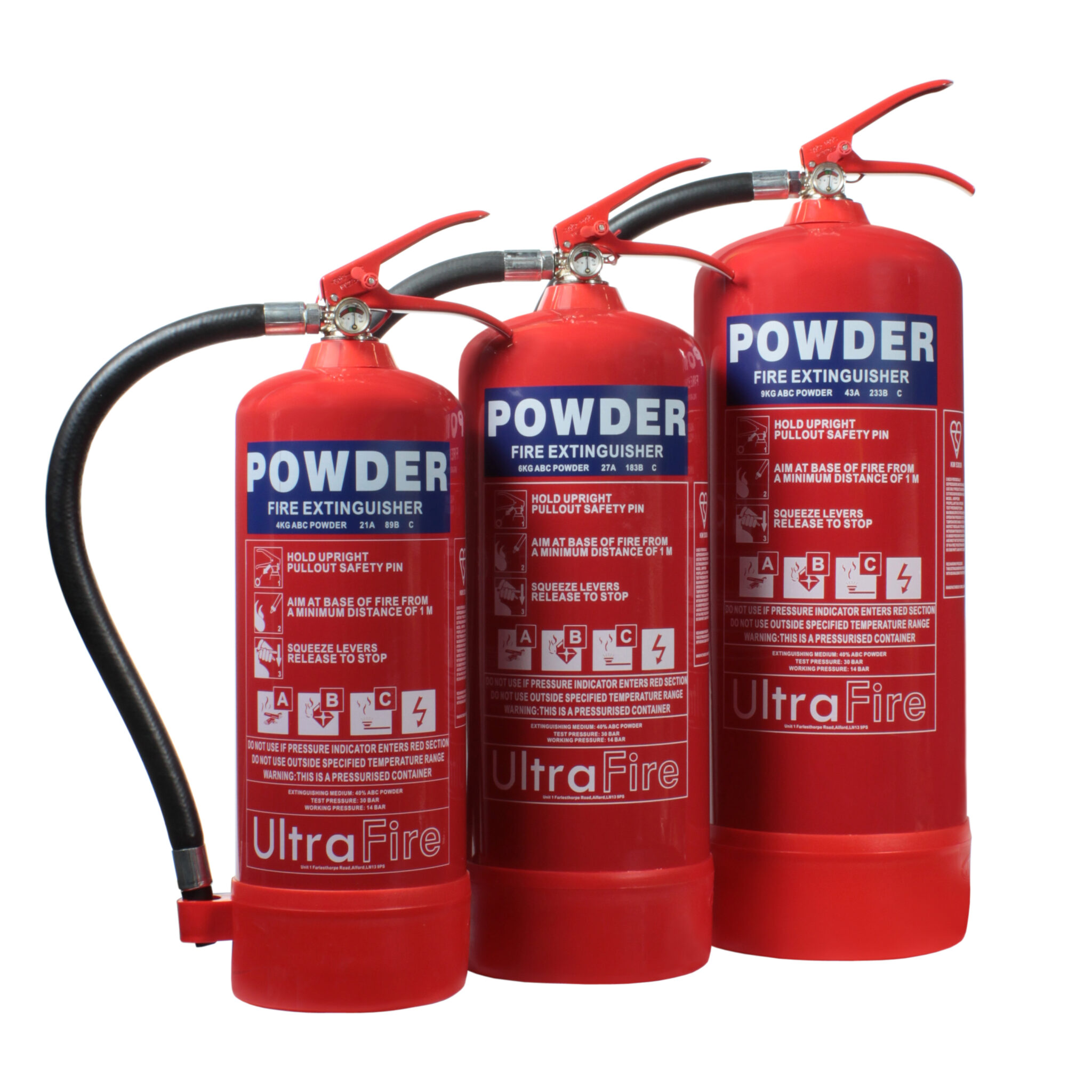-
Contact
Sales & Customer Service
0800 612 6537 support@safelincs.co.uk Live ChatDelivery Enquiries
0800 077 6149 - Resources
Fire & Safety Solutions
CALL OUR TEAM NOW 0800 612 6537
Lines open today 8am - 6pm
FREE Delivery
on marked products
Live Chat - Online
Instant help & Advice
Trade Discounts
and exclusive pricing
0% Credit Available
Open an account now
5 Star Customer Feedback
All Fire Extinguishers
Fire extinguishers are essential safety devices that can mean the difference between a minor incident and a devastating blaze. But with different types designed for specific fire classes, choosing the proper extinguisher for your property isn't always straightforward. Understanding the various types available will help you make informed decisions about fire safety. The main types of fire extinguishers There are five primary types of fire extinguishers, each designed to effectively tackle specific fire classes. Water extinguishers are most effective on Class A fires, which involve ordinary combustibles such as wood and paper. Foam extinguishers handle Class A fires, although not all of them are suitable for Class B fires. Dry powder extinguishers offer the broadest coverage, ideal for Class A, B, and C fires. Carbon dioxide (CO2) extinguishers excel in extinguishing electrical fires and flammable liquids, leaving no residue. Wet chemical extinguishers are engineered explicitly for Class F fires involving cooking oils and fats. Choosing the right fire extinguisher type Selecting the appropriate extinguisher depends on your specific fire risks. Consider what materials are present in your environment. Offices typically need water, water mist or foam extinguishers for paper and electrical equipment. Kitchens require wet chemical extinguishers for cooking fires. Garages and workshops benefit from dry powder extinguishers due to the presence of flammable liquids and electrical equipment. Industrial settings often need multiple types to cover various hazards. Are there fire extinguishers that work on multiple fire classes? Yes, several types of extinguishers can handle multiple fire classes. Dry powder extinguishers are remarkably versatile and practical on Class A, B, and C fires. This makes them popular for vehicles and mixed-risk environments. Some foam extinguishers are not suitable for class B fires and almost all are dielectrically tested and so are suitable for use on fires involving electrical equipment. However, specialist extinguishers, such as wet chemical for cooking fires and CO2 for electrical equipment, often provide better-targeted protection. The difference between portable and wheeled fire extinguishers Portable extinguishers are designed for handheld use, typically ranging from 1kg to 9kg. They're perfect for immediate response to small fires. Wheeled extinguishers are larger units, typically ranging from 25kg to 50kg, and are mounted on wheels for enhanced mobility. These provide greater fire-fighting capacity and longer discharge times, making them ideal for industrial premises, car parks, and areas with higher fire loads. Do different types of fire extinguishers require different maintenance? All types of fire extinguishers require regular maintenance, but the specific requirements vary slightly. Water and foam extinguishers need annual servicing and pressure testing every five years. Dry powder extinguishers require similar maintenance schedules. CO2 extinguishers need weight checks and valve inspections. Wet chemical extinguishers need particular attention to seals and pressure gauges. Professional servicing ensures all types remain effective when required. P50 fire extinguishers don't require any annual servicing (just a quick visual inspection by a member of staff). Can I use any fire extinguisher on electrical fires? No, only specific types are safe for electrical fires. CO2 extinguishers are ideal because they don't conduct electricity and leave no residue. Dry powder extinguishers can also be used on electrical fires, though they create a mess. Water-based extinguishers such as water, water mist and foam can be used on fires involving live electrical equipment as long as they have been dielectrically tested in accordance with BS EN3. Always isolate power where possible before utilising any extinguisher. For detailed guidance on selecting the right extinguisher for electrical equipment, consult our comprehensive fire extinguisher types guide. Ready to protect your property with the proper fire extinguisher? Browse our comprehensive range of fire extinguishers, from portable units to wheeled models, all backed by expert advice and professional installation services. Understanding which fire extinguisher types are safe for electrical equipment is crucial for comprehensive fire safety planning. Contact our fire safety specialists today for personalised recommendations based on your specific needs. Frequently Asked Questions (FAQs) What size fire extinguisher do I need for my vehicle? Vehicle fire extinguishers require careful consideration of size based on your vehicle type and space constraints. For cars and smaller vehicles, 600g to 1kg powder extinguishers provide excellent fire-fighting capability whilst remaining compact enough for easy storage. Vans benefit from 2kg powder extinguishers, which offer greater capacity without being cumbersome. Commercial vehicles, such as lorries and HGVs, typically require 4kg to 6kg powder extinguishers for adequate protection. The key is balancing firefighting power with portability and storage space. What's the difference between stored pressure and cartridge-operated fire extinguishers? Stored pressure extinguishers keep the pressurising gas stored within the central cylinder alongside the extinguishing agent. This design makes them lighter and more compact, making them ideal for portable applications. Cartridge-operated extinguishers store the pressurising gas in a separate cartridge that punctures when activated. These systems are more reliable for long-term storage and are often used in industrial applications. Both types are effective, but stored pressure units are more common for general commercial and domestic use. Are refurbished fire extinguishers as reliable as new ones? Refurbished fire extinguishers can be just as reliable as new units when properly reconditioned. These second-life cylinders undergo rigorous testing and re-certification to ensure they meet all safety standards. The reconditioning process includes pressure testing, component replacement, and quality checks. They provide an economical alternative to new extinguishers whilst maintaining effectiveness. However, they may have shorter warranty periods and slightly different aesthetics compared to brand-new units. Why are stainless steel fire extinguishers more expensive? Stainless steel fire extinguishers are more expensive due to the superior materials and manufacturing processes used in their production. The stainless steel construction offers excellent corrosion resistance, making them ideal for harsh environments or prestigious locations where appearance matters. They maintain their polished finish longer than painted steel alternatives and provide enhanced durability. These extinguishers are popular in hotels, restaurants, and commercial premises where aesthetics are essential. The premium price reflects both the materials used and the enhanced longevity they provide. What fire extinguisher capacity do I need for different room sizes? Fire extinguisher capacity requirements depend on the fire risk and the size of the room being protected. Small offices and domestic rooms typically need 1kg to 2kg of extinguishers for adequate coverage. Medium commercial spaces benefit from 4kg to 6kg units, which provide longer discharge times and greater firefighting capability. Large warehouses, industrial areas, and high-risk environments often require 9kg portable units or wheeled extinguishers for maximum protection. When selecting capacity, consider maximum travel distance, the potential fire load and the distance the extinguisher needs to cover.
Read more about fire extinguishers...
Thomas Glover 9kg L2 Powder Extinguisher
A specialist fire extinguisher designed to extinguish fires fuelled by burning metals such as lithium (up to 4700°C).
- Effective on fires involving Lithium (in powder / swarf form)
- Suitable for most fires involving combustible metals
- Special low velocity lance applies powder directly to fire
- CE marked
- Corrosion free valve assembly























